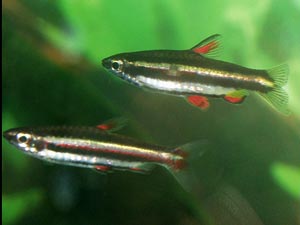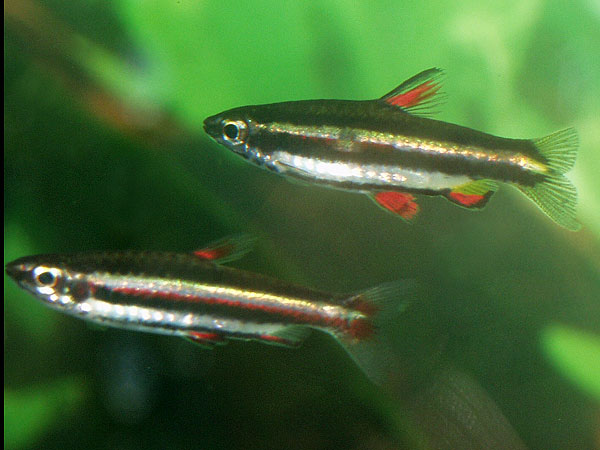

Species Profile | Images | Breeding Report | Similar Species

(Other members of the genus Nannostomus)
ADULT SIZE: 4 cm
WATER CONDITIONS: Moderately soft and acidic
TEMPERATURE RANGE: 23-27 C
FOOD: Feed Nannostomus marginatus small live-foods and fine grade dried foods
DISTRIBUTION: This species comes from Guyana
AQUARIUM CARE: A readily availiable community fish that does well in planted tanks. This species fits nicely into a Amazon biotope aquarium alongside tetras such as the neon or cardinal, and larger fish such as the discus or angel fish
BREEDING: This is a typical egg scatterer and as such is best spawned over marbles to avoid predation. In a well planted and understocked aquarium young may also survive. The fry are small and need infusoria as a first food.
Have you bred Nannostomus marginatus? Why not fill in a breeding questionaire?, or examine existing Nannostomus marginatus breeding reports
Other members of the genus Nannostomus
Other characin species
Other species from Guyana

The Dwarf pencil fish
BREEDING: This is a typical egg scatterer and as such is best spawned over marbles to avoid predation. In a well planted and understocked aquarium young may also survive. The fry are small and need infusoria as a first food.
Have you bred Nannostomus marginatus? Why not fill in a breeding questionaire?
This page summarises breeding reports provided by visitors to this site, along with some statistical analysis. Please feel free to contribute - whatever your experience!
| |||||||||
|
| ||||||||
|
| ||||||||
| |||||||||
|
| ||||||||
Remember, each record represents only one persons experience; if you had different results, or used different methods, please share your experiences
| Water conditions: Moderately soft and acidic | Water temperature: 24-27oC |
| Disposition: Active, but not aggresive | Community tank?: Yes, a good community fish |
| Spawning Method: | Breeding problems: none |
| Sex ratio: | Breeding difficulty: |
| Sucess: | Years Experience: 1 |
| Other Comments: | |
| Date this record created: 9th February 2013 | Breeding date: 2013 |
| Breeder: | Location: |
| Water conditions: Very soft and acidic | Water temperature: 24-27oC |
| Disposition: Active, but not aggresive | Community tank?: Yes, a good community fish |
| Spawning Method: Peat (or similar) spawning substrate | Breeding problems: none |
| Sex ratio: Roughly equal | Breeding difficulty: Very easy |
| Sucess: Fairly sucessful | Years Experience: 3 |
| Other Comments: | |
| Date this record created: 21st July 2008 | Breeding date: 2008 |
| Breeder: | Location: |